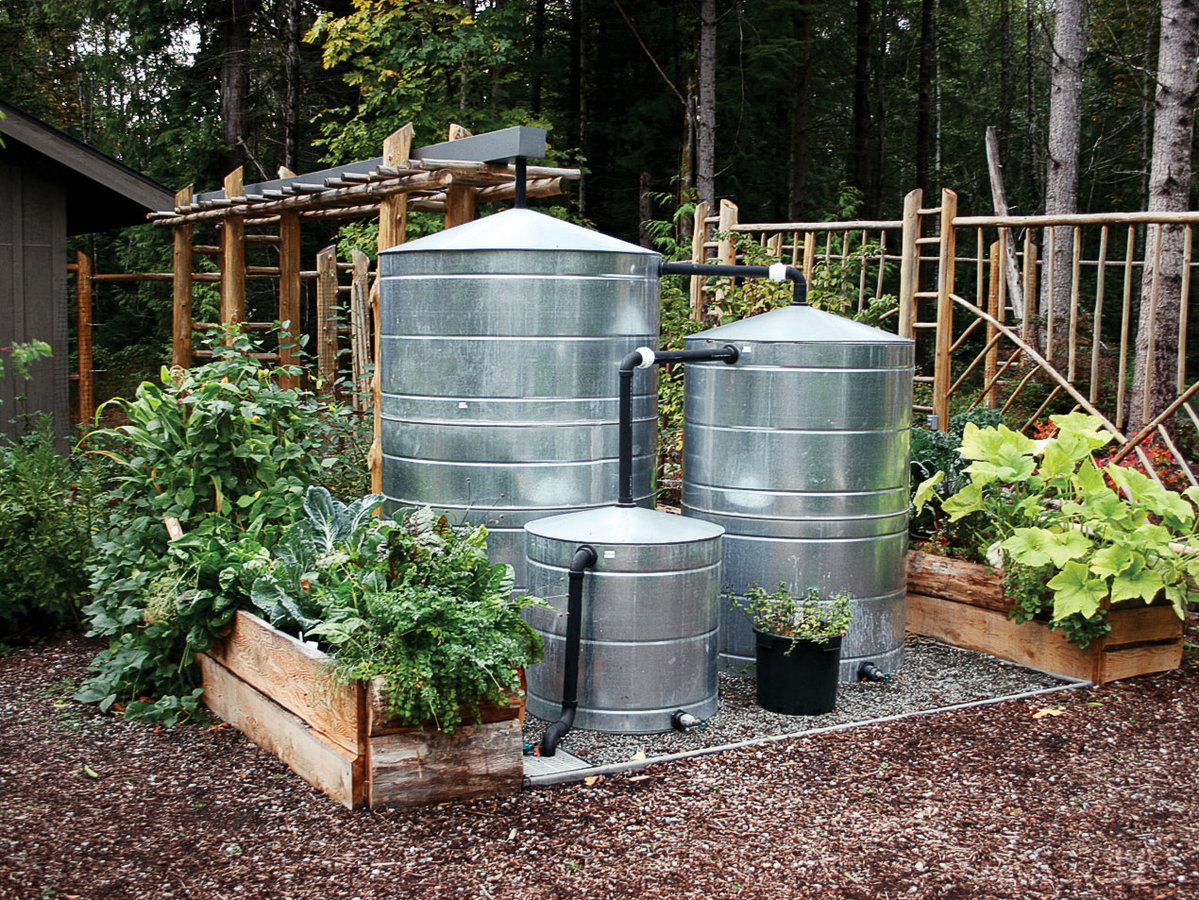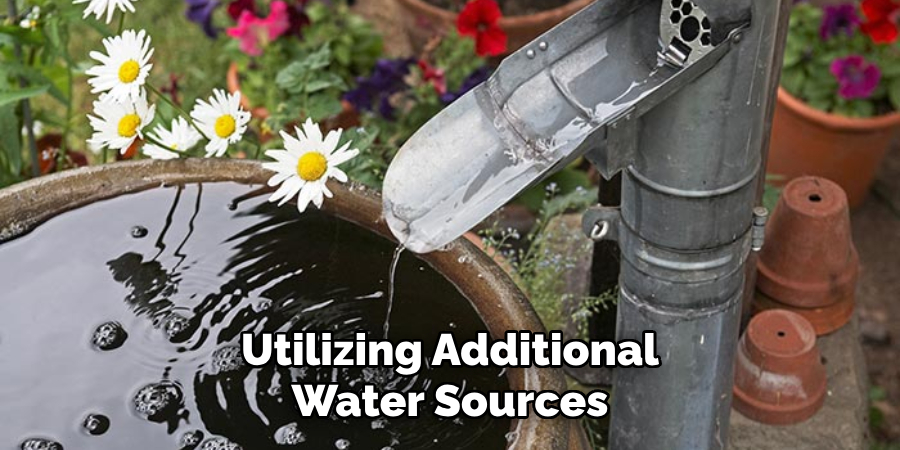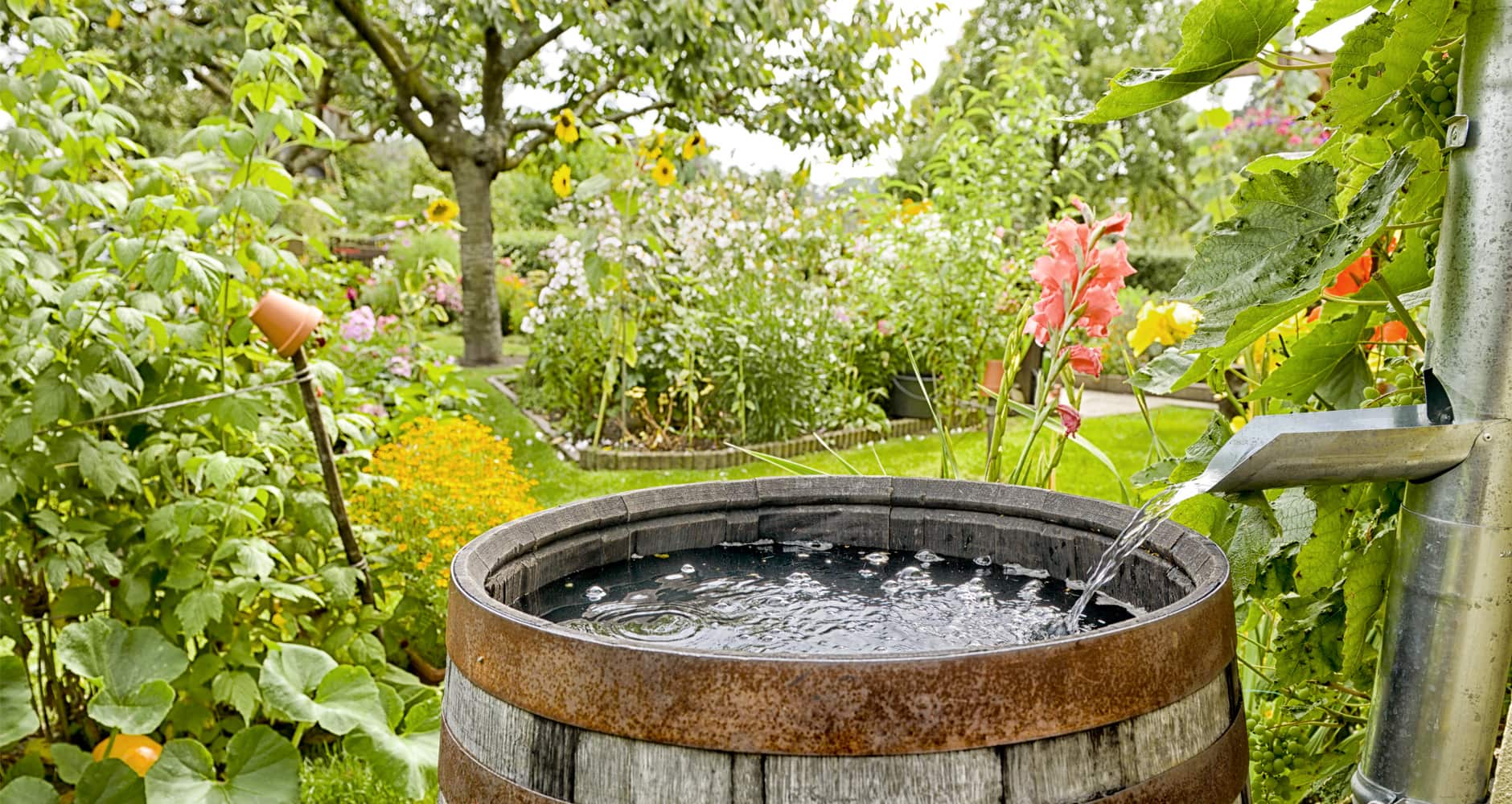To store rainwater for garden plants, use rain barrels or storage tanks. Ensure that the containers have a cover to prevent evaporation and protect against mosquito breeding.

Credit: www.sunset.com
Benefits Of Rainwater Harvesting
Rainwater harvesting offers numerous benefits for garden plants, improving their growth and overall health. Rainwater is rich in nutrients and free from harmful chemicals, making it an ideal choice for irrigation. Unlike tap water, rainwater is pure and doesn’t contain chlorine or fluoride, which can be detrimental to plants.
By using rainwater, gardeners can provide their plants with a natural and organic water source, promoting stronger root development and enhancing the absorption of essential nutrients. Furthermore, rainwater is at the perfect temperature for plants, unlike tap water, which can be too cold or too hot.
Harvesting rainwater also helps conserve water resources and reduces reliance on municipal water supplies. Overall, rainwater is a sustainable and eco-friendly solution for gardeners, ensuring healthier, more vibrant plants in their gardens.
How to Store Rainwater for Garden Plants: Step by Step Guide
Choosing The Right Rainwater Storage System
Choosing the right rainwater storage system is crucial for effectively storing rainwater for your garden plants. Factors to consider when selecting a rainwater storage system include the size of your garden, the amount of rainfall in your area, and your budget.
There are different types of rainwater collection methods available, such as rain barrels, cisterns, and rainwater tanks. Each option has its own pros and cons, so it’s important to weigh them before making a decision. Rain barrels are affordable and easy to install, but they have limited storage capacity.
Cisterns offer larger storage capacity but can be more expensive. Rainwater tanks provide the most storage capacity but require professional installation and a larger upfront investment. Consider your specific needs and preferences to determine the most suitable rainwater storage system for your garden plants.
Setting Up A Rainwater Collection System
Setting up a rainwater collection system involves careful planning, considering the location and size of the storage tanks. Install gutters and downspouts to optimize water collection. Add filters and screens to ensure debris and contaminants are removed.
Maintaining Your Rainwater Storage System
Maintaining your rainwater storage system is crucial to ensure its efficiency and effectiveness. Regular cleaning and maintenance are essential to prevent clogging and contamination. Monitoring water levels is important, and recharging the system during dry spells is necessary to keep it functioning optimally.
To prevent mosquito breeding and algae growth in stored rainwater, you can follow some helpful tips. By adhering to these guidelines, you can create a sustainable rainwater storage system for your garden plants. Keeping the system clean, monitoring water levels, and preventing issues like mosquito breeding and algae growth will help you make the most of your stored rainwater.
Ultimately, a well-maintained storage system will ensure that your garden plants thrive and flourish.
Using Rainwater For Garden Irrigation
Properly storing rainwater can be a valuable resource for garden plants, especially when it comes to irrigation. By maximizing water efficiency and adjusting strategies based on seasonal weather patterns, you can ensure optimal plant growth. Instead of relying solely on other water sources, utilizing stored rainwater is an eco-friendly approach that reduces waste.
Whether you’re starting a green project or simply looking for ways to conserve water, using rainwater to nourish your garden is a practical and sustainable solution. So, next time it rains, be sure to collect and store rainwater, providing your plants with the hydration they need to thrive.
Supplementing Rainwater With Other Water Sources
Supplementing rainwater with other sources can be necessary during water scarcity. Gardeners often face the challenge of balancing water conservation efforts with the needs of their plants, especially in drought conditions. Exploring alternative options for garden irrigation becomes essential in such situations.
By utilizing additional water sources, gardeners can ensure that their plants receive adequate hydration. This can involve collecting water from sources like wells, rivers, or municipal supplies. It is crucial to determine when to supplement rainwater and how to do it effectively.

By monitoring the precipitation levels and assessing plant requirements, gardeners can make informed decisions about when and how to provide additional water. Taking these steps will help maintain healthy garden plants without compromising water conservation efforts.
Rainwater Storage Safety And Health Considerations
Storage safety and health considerations are essential when it comes to storing rainwater for garden plants. Ensuring the safety and quality of stored rainwater is crucial, especially for edible crops and herbs. Precautions should be taken to minimize potential risks.
Testing the rainwater for contaminants and treating it if necessary is a vital step. By doing so, you can ensure that the water used for your garden is free from harmful substances. Taking these precautions will help you maintain the health and well-being of your plants.
It’s important to prioritize safety when storing rainwater, so you can confidently use it to nourish your garden.
Frequently Asked Questions Of How To Store Rainwater For Garden Plants
Can I Use Rainwater To Water My Garden Plants?
Yes, rainwater is an excellent and eco-friendly option for watering your garden plants. It is free from chemicals and minerals found in tap water, which can be harmful to plants. Collect rainwater in barrels or tanks to use during dry spells for a healthier garden.
How Do I Store Rainwater For My Garden Plants?
To store rainwater, you can set up a rain barrel or a larger rainwater harvesting system. Position the barrel or tank beneath your downspout to collect the rainwater. Use a cover to prevent debris and mosquitoes from entering. Use a hose or watering can to distribute the stored rainwater to your garden plants.
What Are The Benefits Of Storing Rainwater For Garden Plants?
Storing rainwater for your garden plants has several benefits. It allows you to reduce water consumption from the mains supply, saving you money on your water bill. Rainwater is also free from chemicals, making it healthier for your plants. It promotes water conservation and reduces stormwater runoff, benefiting the environment.
Conclusion
Overall, storing rainwater for your garden plants is a cost-effective, sustainable, and environmentally friendly solution. By collecting and utilizing rainwater, you can reduce your reliance on municipal water supplies and conserve this precious resource. Plus, rainwater is naturally free of chlorine and other chemicals, making it the perfect option for watering your plants.
Whether you choose to install a rain barrel or a more sophisticated rainwater harvesting system, the benefits are clear. Not only will you save money on your water bills, but you’ll also create a thriving garden that is healthier and more vibrant.
So, why not take advantage of nature’s gift and start collecting rainwater for your garden today? Your plants will thank you, and so will the planet.

